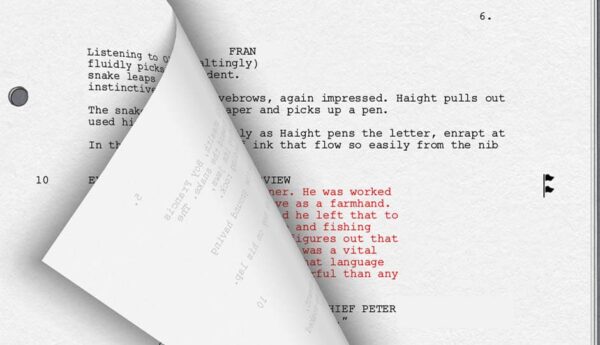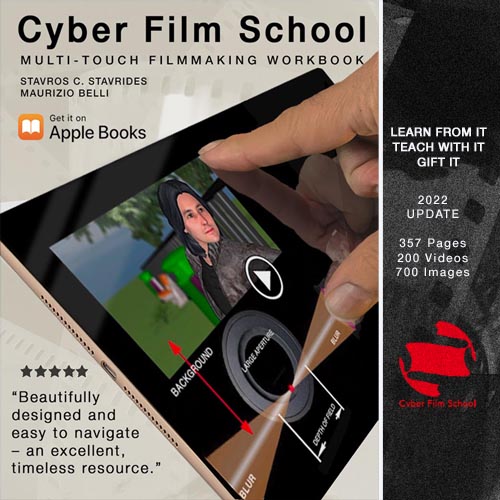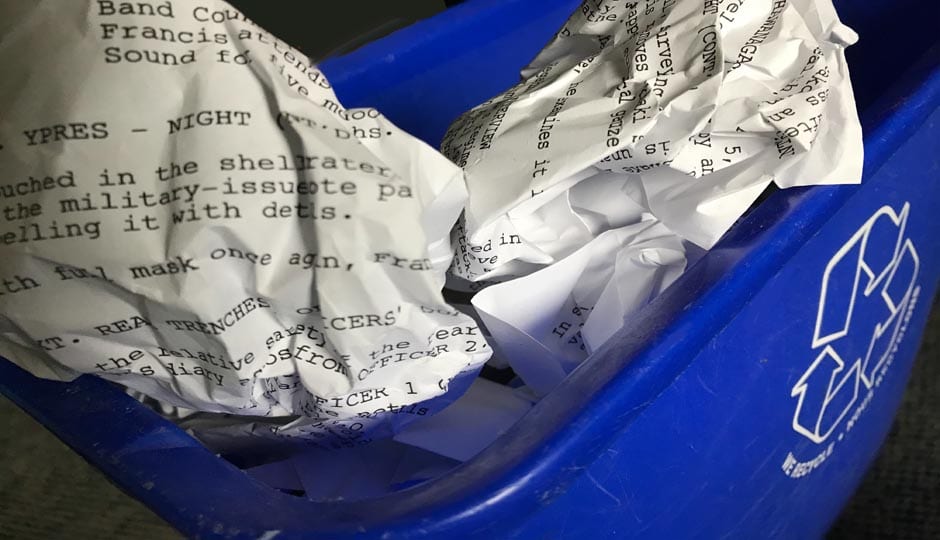Originality is the most powerful weapon of the independent filmmaker, and your best shot at beating Hollywood is with a creative original script. To underestimate the importance of a good script when making an independent film is a fatal mistake.
By Glen Berry, Edited By Stavros C. Stavrides
Important Concepts
- “Story” is the Indie Advantage
- Face down that empty page
- Brevity is the soul of wit
Facing Down The Page
The problem with creativity and originality is that this combo is rare, hence its value. However, it takes more than a creative brain to come up with a great script.
Unfocused and undisciplined talent leads to unfocused and undisciplined work. By recognizing the importance of a few simple guidelines, the creative writer who wishes to develop a screenplay can create a story that easily moves from paper to screen.
A scriptwriter should always be on the lookout for unique concepts, whether it be from real-life experiences, news stories or simply daydreaming. Just because a concept can be interesting, it doesn’t necessarily mean it merits a screenplay.
Sometimes, the most difficult thing to do is to face down the empty page.
In the course of translating the language of our mind into words, we discover that the concept will not work in script form. That is a natural part of the process. But when you feel your concept is ready, the most important thing to do is put words on the page in whatever form they come out.
The Premise
The development of a project begins with a completed script. Although everyone will agree this is the way to go, few actually adhere to this rule.
So many filmmakers are eager to get a camera in their hands and spend little time thinking about why they’re making those images. You really should come out of that process with three things:
- A premise (or logline)
- Treatment and,
- A completed script.
This post is a support article for the chapter “Screenwriting” in
Cyber Film School’s Multi-Touch Filmmaking Textbook.
When you are ready to write, crystallize your concept into a two to three-sentence description, commonly called a premise or brief. Although it may be painful to see your masterpiece condensed into a handful of words, this is no time to be self-indulgent. There should be a certain beauty in straightforward simplicity.
A premise is a 2-3 sentence description of your plot. It’s the opening of your pitch and the most important part of your entire project. Many neophyte writers balk at the idea of reducing their masterpiece to a blurb on a TV listing. but it ought to be viewed as a creative challenge, not an affront to your art.
Your finely honed premise is your one shot to capture the interest of your investor and spark their imagination with a few well-chosen words. If that puts you under some pressure, don’t worry. Crafting pitches takes time and experience.
Develop a half-dozen pitches and try them out on cynical friends and colleagues. You don’t want to walk into a meeting with a pitch that’s less than perfect. You need one that rolls off the tongue like golden honey. You may have to swallow a lot of bile to produce that pitch but that’s what the game is all about.
Do not compare your film to other films, or describe what you intend to do with your film. Your goals are not important at this point.
If a producer or investor finds your concept interesting, they’ll ask you about that and many other things later. The premise is simply a means to draw potential partners further into your project.
The objective is to entice them to read your treatment, and the objective of the treatment is to get them to read your script. It’s a process to draw them further and further in until the time is ripe to sell them a piece of your project.
Summary
- A risky or unique concept is one of the few advantages an independent film has over a studio picture. You must embrace risk-taking and shun convention to be successful.
- Many times, the most difficult thing is getting the first words on the page.
- If you have difficulty getting started, put words and ideas down without worrying about structure or rules.
- You must be able to crystallize the concept of your movie into a single, simple expression.
NEXT: STORY STRUCTURE >>
Getting started with the screenwriting
process and three-act structure.
Make Cinema Your Language
Cinema is a language we all understand, but not everyone ‘speaks’ it–directors do.
This interactive, self-guided textbook is a director’s toolbox, made for Apple Books.
Embrace a solid foundation with a future-proof, classic combo of theory, technique, history, and critical thinking.
Gain practical, adaptable creative skills and insight that transcend technological changes, be it a camera, mobile device, or AI.





